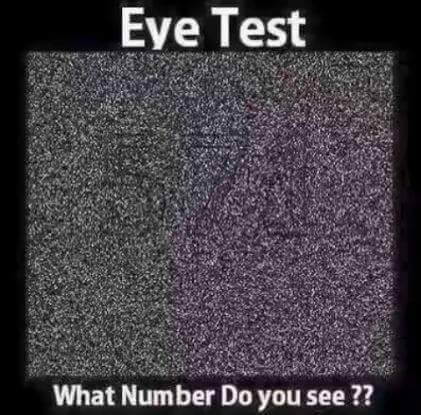Leave it to an optical illusion to mess with your eyesight!
In this particular eye test, a number can be seen — but are you able to decipher it?
It appears to be 571, but others are also seeing 574, 579, 174 and even 365.
Tell us what you see in comments, and share this post with your pals to find out what they see!
Optical illusions have captivated human curiosity for centuries, offering a fascinating glimpse into the complexities of human perception. These visual phenomena occur when the information gathered by the eye is processed by the brain in a way that creates a perception that differs from reality. They challenge our understanding of vision and cognition, revealing the intricate interplay between the eyes and the brain.
Types of Optical Illusions
Optical illusions can be categorized into several types, each illustrating different aspects of visual perception. The main types are literal, physiological, and cognitive illusions.
Literal illusions create images that are different from the objects that make them. For example, the famous “rabbit-duck” illusion can be seen as either a rabbit or a duck depending on the viewer’s focus.
Physiological illusions occur due to the excessive stimulation of the eyes and brain. These include the afterimages seen after staring at a bright light or patterns that induce motion where none exists, such as the rotating snakes illusion.
Cognitive illusions involve higher-level cognitive functions. These illusions are often the most intriguing as they play on the brain’s assumptions about the world. Examples include the Müller-Lyer illusion, where lines of the same length appear different due to the arrow-like ends, and the Penrose stairs, a staircase that seems to defy the laws of physics by looping endlessly.
How Optical Illusions Work
Understanding optical illusions requires exploring the mechanisms of vision and perception. When light enters the eye, it hits the retina, where photoreceptor cells convert it into electrical signals. These signals travel to the brain, where they are processed to form an image.
However, the brain does not merely reproduce the visual input; it interprets and makes assumptions based on past experiences, context, and expectations. This process is usually seamless and allows us to navigate the world efficiently. However, it can also lead to misinterpretations, resulting in optical illusions.
One common mechanism is contrast. For instance, in the checker shadow illusion, a gray square appears lighter or darker depending on the surrounding shades and the shadow cast on it. The brain interprets the colors relative to the context, leading to a false perception.
Gestalt principles also play a crucial role. These principles describe how we naturally organize visual elements into groups or unified wholes. For example, in the Kanizsa triangle, the brain perceives a triangle where none exists, simply because it prefers to see complete shapes.
The Psychological Impact of Optical Illusions
Optical illusions are not just amusing tricks; they also have significant psychological implications. They reveal the brain’s shortcuts and biases, offering insights into how we perceive and interpret the world. Studying illusions can help neuroscientists understand the underlying processes of vision, leading to advancements in fields like artificial intelligence and virtual reality.
Moreover, optical illusions can be therapeutic. They are used in cognitive therapies to help patients with visual or perceptual disorders. By challenging and training the brain’s interpretation mechanisms, patients can improve their visual processing skills.
Optical Illusions in Art and Culture
Artists have long exploited optical illusions to create compelling works that challenge viewers’ perceptions. From the impossible structures of M.C. Escher to the vibrant, shifting patterns of Op Art, illusions have become a powerful tool in visual art. They invite viewers to question their reality and engage more deeply with the artwork.
Conclusion
Optical illusions remain a captivating field of study, bridging the gap between art, psychology, and neuroscience. They remind us that our perception of reality is not always accurate and that our brains are constantly interpreting and reinterpreting the visual information they receive. By exploring these fascinating phenomena, we gain a deeper appreciation for the complexity of human perception and the remarkable capabilities of the brain.





